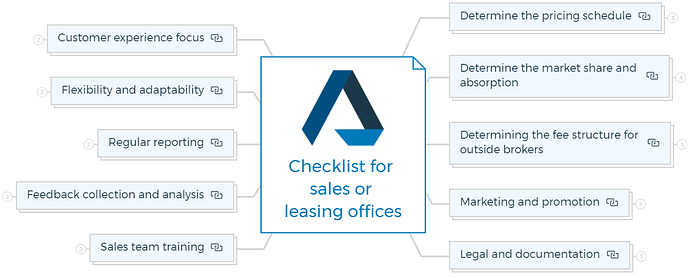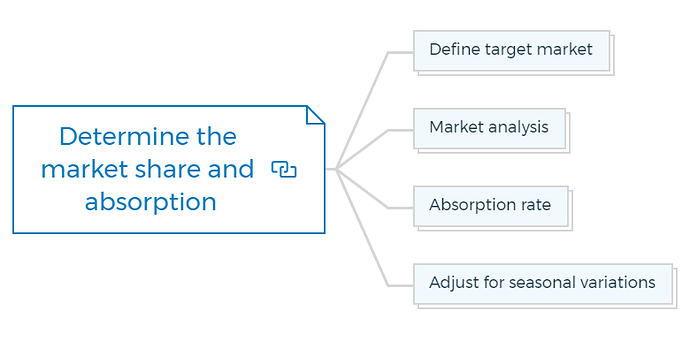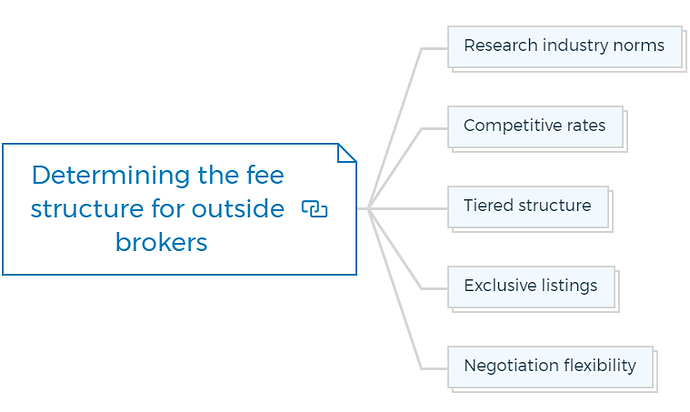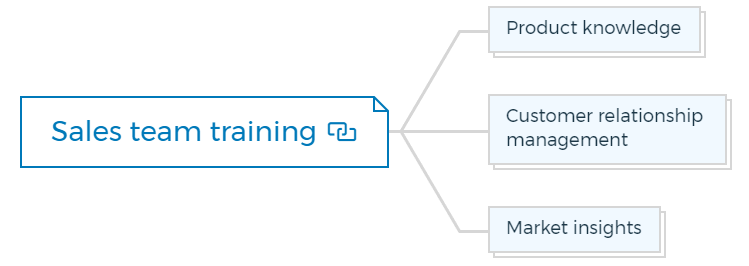1. Determine the pricing schedule
Research comparable properties
Analyze recently sold or leased properties in the area to understand the prevailing market prices.
Consider property features
Evaluate the unique features, amenities, and specifications of the property that might justify a premium price.
Market trends
Monitor current real estate market trends, including supply and demand dynamics, to align pricing with market conditions.
Competitor analysis
Study pricing strategies of competitors to position the property competitively.
Seek professional appraisal
Engage a certified appraiser to provide an accurate valuation based on the property’s attributes and location.
2. Determine the market share and absorption
Define target market
Identify the ideal buyer or tenant profile based on demographics, preferences, and needs.
Market analysis
Conduct a thorough market analysis to estimate the potential market share the property could capture.
Absorption rate
Calculate the rate at which properties in the area are being sold or leased to estimate how quickly the property is likely to be absorbed by the market.
Adjust for seasonal variations
Consider any seasonal fluctuations in demand that might impact absorption rates.
3. Determining the fee structure for outside brokers
Research industry norms
Investigate prevailing commission rates and fee structures for real estate brokers in the specific market and property type.
Competitive rates
Set competitive commission rates to attract and incentivize outside brokers to bring potential buyers or tenants.
Tiered structure
Consider a tiered commission structure based on sales or lease value to reward brokers for higher-value transactions.
Exclusive listings
Define commission differentials for exclusive listings to encourage broker commitment.
Negotiation flexibility
Design the fee structure to allow for negotiation, particularly for high-value transactions.
Learn More
4. Marketing and promotion
Develop marketing plan
Create a comprehensive marketing strategy that includes online and offline channels to reach the target audience.
Professional collateral
Produce high-quality brochures, virtual tours, professional photographs, and floor plans to showcase the property’s features.
Online presence
List the property on relevant real estate websites and platforms to maximize online visibility.
Local advertising
Consider local advertising through newspapers, magazines, billboards, and community events.
Social media
Leverage social media platforms to showcase the property and engage with potential buyers or tenants.
5. Legal and documentation
Legal compliance
Ensure all legal requirements related to property sales or leasing are met, including disclosures and contractual obligations.
Contracts and agreements
Prepare clear and comprehensive sales or lease agreements that outline terms, responsibilities, and conditions.
Due diligence
Facilitate due diligence processes for potential buyers or tenants, providing necessary documents and information.
6. Sales team training
Product knowledge
Train the sales team to have a deep understanding of the property’s features, benefits, and unique selling points.
Customer relationship management
Provide training on effective communication, objection handling, and building rapport with potential clients.
Market insights
Equip the sales team with up-to-date market information to answer questions and address buyer or tenant concerns.
7. Feedback collection and analysis
Gather feedback
Collect feedback from potential buyers or tenants who visit the property to understand their impressions and concerns.
Analysis and improvement
Analyze feedback to identify areas for improvement in property presentation, marketing strategies, and sales processes.
8. Regular reporting

Tracking metrics
Establish key performance indicators (KPIs) to measure the effectiveness of marketing efforts, sales conversions, and absorption rates.
Regular reports
Generate regular reports to monitor progress and make data-driven decisions for adjustments in strategies if necessary.
9. Flexibility and adaptability

Dynamic strategies
Remain adaptable to changes in market conditions, adjusting pricing, marketing, and sales approaches as needed.
Competitive analysis
Continuously monitor competitors and adjust strategies to maintain a competitive edge.
10. Customer experience focus

Positive interaction
Ensure a positive and professional experience for potential buyers or tenants at all touchpoints.
Prompt response
Respond promptly to inquiries and requests for information, fostering a sense of reliability and trust.









